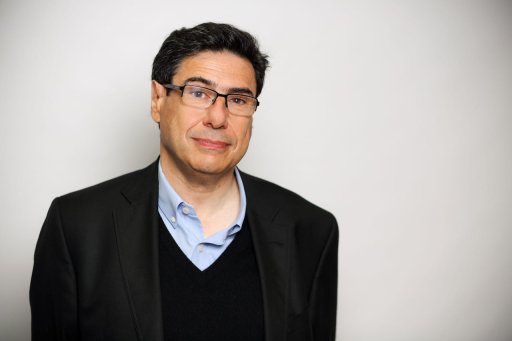Art and literature critic and theorist, filmmaker and curator, Mieke Bal has never stopped breaking codes throughout her academic career. This atypical researcher, a specialist in literature among other fields, plays with the boundaries of interdisciplinarity. For the period 2022-2023, she has been invited to take up a position on The Invention of Europe through languages and cultures Annual Chair, created in partnership with the French Ministry of Culture.
It's a difficult exercise for someone who doesn't like to be pigeonholed, but could you try to describe yourself in a few words?
I studied French, more specifically general and comparative literature, during which time I specialized in narratology, i.e. the study of narrative techniques and structures in literary texts.
At the end of the sixties, narratology was still a new science in the academic world, even though certain authors, such as the novelist Henry James and later Roland Barthes, had already considered the need to develop a theory that would enable us to understand how the narrative is structured, in order to identify the mechanisms that enable the author to "manipulate" the reader. Knowing and mastering these mechanisms not only makes it easier to get into a story, but also to write better novels.
It was a book by literary theorist Gérard Genette, given to me by a relative for Christmas, that set me on the path to narratology. In it, Genette develops a theory of narratology based on Proust's writings. His work inspired me, even if I didn't agree with everything he said. In fact, I sent him an article for his journal Poétique explaining the reason for my disagreement, which concerned the absence or absence of focalization, i.e. the point of view adopted by the narrator. I thought that a narrative without focalization was impossible. He replied: "That's exactly the kind of constructive criticism I've been waiting for on my work", and published it immediately. Following this exchange, he invited me to speak at his seminar, until he got angry with me after I made a connection between narratology and politics, which he didn't appreciate. In fact, I've been involved in scandal after scandal throughout my career, because, let's face it, I'm a scandal-monger.
In your opinion, narratology isn't just useful for understanding texts. It is also relevant to the analysis of other works of art, such as paintings, videos and so on. How did you discover it?
After my studies, I began studying the Bible, without being religious. I tried to find out how to apply narratology to biblical texts, which at first posed problems for me, because ancient texts from another culture don't fit in well with modern Western theory.
Through hard work, I became an expert in this field and was invited to speak at a conference in Israel. It was a complicated situation for me to comment on a biblical text in a country with such a strong religious history. I didn't want to appear arrogant. As I'm Dutch, I decided to use another medium alongside the original text, namely an engraving by the Dutch artist Rembrandt. This engraving depicted a scene from Genesis in which the wife of Potiphar, an officer of the Pharaoh, seduces Jacob's son Joseph. She asks him to sleep with her, which he refuses. In the scene, Potiphar's wife angrily seizes Joseph's cloak as he flees. The engraving shows her grabbing the cloak, but the garment is so strong that it doesn't wrinkle. I saw that this image revealed a huge erection... At the time, I had wrapped a felt-tip around this shape to show it at a conference, which caused a scandal. What I wanted to demonstrate by highlighting this part of the mantle was that this work was in fact the reflection of a female fantasy, that of Potiphar's wife. Much to my surprise, biblical scholars were quite receptive to my interpretation. It was the art historians who were particularly upset.

You explain that our relationship with art is a question of perspective, and that it depends on our culture..
Art criticism is indeed a matter of perspective, as the story of Joseph and Potiphar's wife shows. In the Bible, Potiphar's wife is described as an evil woman. In the Koran, on the other hand, she manages to win the sympathy of the other women. This shows that the same story can have two very different meanings, depending on the culture to which it belongs. Potiphar's wife was Egyptian, a country with a strong Muslim culture, which may explain her negative portrayal in the Bible, while the Koran portrays other women's sympathy for her.
But art isn't just about our cultural prism. The Indian artist Nalini Malani, a friend of mine, produced a work on paper during the confinement that depicts a young man carrying an old man on his shoulders. As soon as I saw this drawing, I interpreted it as Aeneas' flight, carrying his father Anchises to flee burning Troy. When I told her this, she replied, "I hadn't thought of that at all!" My explanation didn't bother her at all, even though in reality she had wanted to depict a young Uyghur man carrying his father on his back as he fled the Chinese regime. This didn't bother her at all, because the refugee is timeless, just as art is anachronistic.

Does the anachronism of art mean that we can appreciate a work from the classical period with our contemporary culture, without misinterpreting it?
Yes, it does. In art, anachronism is inevitable, and it's also a way of better understanding it. To take Rembrandt as an example, I commented on another of his paintings, which depicts Bathsheba, the wife of one of King David's soldiers, whom he eventually rapes. In this painting, a servant is cleaning her before King David comes to coerce her. In this painting, Bathsheba's legs are crossed in a way that is impossible for a normal person to reproduce.
My interpretation is that this position was intended by Rembrandt to make a double image: a nude and a narrative, so that we get the impression that Bathsheba is not only watching her maid wash her, but that her body is also addressing us as viewers. Bathsheba's gaze arouses a kind of unease in the viewer. It's a way of warning us, as it were, that we're behaving like voyeurs.
None of Rembrandt's writings explain this, and my interpretation of Rembrandt's paintings might well have been rejected in his day. However, as I see it, the past and the present are in constant dialogue, and we cannot ignore the present when we look at a work of art. My interpretation, while it may not please some art historians, is in tune with the times in which I live, which condemn rape and campaign for greater consideration of female consent in sexual relations.

You've also been interested in the links between politics and art. You've worked on women's rights, the critique of capitalism, migratory issues... and you admit to the "fragmented, non-chronological and interdisciplinary" nature of your work. How do you explain such a diverse career path?
I've never felt comfortable in just one discipline. It's not that I can't discipline myself or become an expert in a field - quite the contrary. When I do something, I learn and do it to the best of my ability. However, I also feel a kind of excitement about intellectual creativity and the discovery of always being on the frontier between disciplines.
Encounters and coincidences have also played a part in building this "fragmented" career. I remember an Arab neighbor whose hand was in plaster. I asked him to have a coffee and tell me what had happened, and we hit it off. We eventually became friends. One day, he told me that he was going to marry a French woman, but the state had objected, assuming it was an arranged, "white" marriage. I wanted to tell his story, this injustice, so I started making documentaries, learning a new trade.
I proposed this documentary to television, but they wanted me to include a voice-over to comment on the images. I didn't want to add a voice-over, because I wanted these people to explain their own story, I wanted to give them the opportunity to speak in their own words, to avoid speaking for them.
Linearity bothers me. We boast about it, but it's wrong and unfair to believe in it.
Let's talk about progress. Is it really that good to defend linearity, or is our progressive world just? Sometimes we have to reject linearity in favor of something more complex, and dare to repeat or go backwards. Linearity is condescending, because it erases everything that doesn't fall within its perimeter. It leaves no room for debate.
Your work on migrants evokes the difficulty of representing trauma. For those who have lived through an event of this kind, expressing it often proves impossible because of the suffering it evokes. Do you think art can express the unspeakable?
If it can't express the unspeakable, it can at least come close. Take Don Quixote, for example . In chapters 39 to 41, an unknown traveler tells the hero that he has been captured by Barbary pirates. Few know it, but the novel's author, Miguel de Cervantes, was also a captive and used as a slave for five years of his life. This story can be seen as a way for the author to recount his trauma through fiction.
This example is not accidental, as I've just produced a series of videos dedicated to the novel Don Quixote for an exhibition. In this exhibition, the videos are presented in a chaotic way, precisely to evoke this trauma.
You've also explored the link between art and politics. Do you think art has to espouse a political cause to be effective?
Art can be political insofar as it doesn't speak explicitly about a political issue. Let me explain: even outside its context, an artist can evoke a political subject.
Unlike politics, art can use anything to talk about politics. An artist can use a flowerpot and his message can be political. In short, art should not be activist, but activating. It doesn't dictate to people what opinion they should have; it merely shakes them up, sparking debate. To awaken thought and provoke debate, that's the role of art.
In one of your interviews, you explain that politics uses discussion and debate to avoid the repetition of ideas. Doesn't this analysis also apply to academic research?
Absolutely. Academia needs to break away from dogma and reject linearity. A good teacher must constantly question and challenge himself. As an academic, stepping out of your comfort zone also means not giving in to complacency. René Descartes was completely mad and doubted everything, but that didn't stop him from becoming one of the greatest geniuses the West has ever known.
I'm also constantly in doubt when I change disciplines, but it's also a way of avoiding complacency. I've never been orthodox and I've never fitted into the right box. My approach doesn't please everyone, and I've drawn the wrath of several academics. That didn't stop me from receiving six honorary doctorates and becoming the first woman and the first female social scientist to hold a professorship at the Royal Netherlands Academy of Arts and Sciences. I was fortunate that the jury was made up of foreign academics. They were in favor of my work. If the jury had been mostly Dutch - even though I'm Dutch - I wouldn't have been elected.
Interview by Emmanuelle Picaud, science journalist










